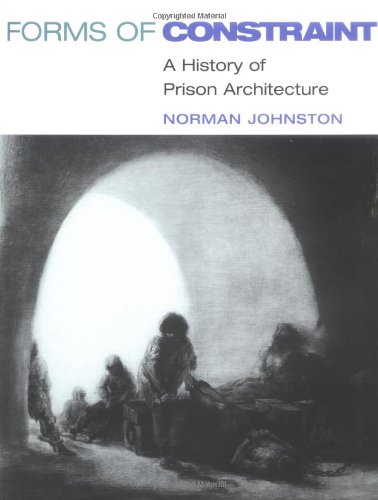Articles liés à Forms of Constraint: A History of Prison Architecture

Synopsis
From musty medieval dungeons to modern electronically surveyed and controlled concrete cellblocks, prison architecture reveals much about how a society sees fit to control and contain those who transgress its boundaries. "Forms of Constraint" is the first general volume to consider how prison design has evolved over the centuries, how it has taken shape in various corners of the globe, and how it reflects the society that oversees it. Rigorously documented and generously illustrated, "Forms of Constraint" surveys prison architecture from earliest times to the present. Embedding his discussion of architectural detail in a history of social ideas about prisoners and imprisonment, criminologist Norman Johnston considers the architectural design and features of prisons in light of the purposes they were meant to serve. He demonstrates how cycles of humane concern and reform efforts alternate and sometimes coexist with periods of impatience with the criminal justice process and a desire to make imprisonment rigorous and unpleasant. Johnston describes the preferred types of prison layout in various eras and locations. He assesses the success or failure of building elements in fulfilling goals such as prisoner isolation, segregation by gender or by severity of crime, adequate hygiene, rehabilitative activities ranging from religious instruction to vocational training, and surveillance of prisoners and guards. As goals and the consequent demands on the physical structure changed, new templates for the ideal prison emerged. Johnston traces the gradual rise of prison design as an architectural speciality and profiles the central early figures and organizations devoted to the field, including William Blackburn, the first architect to specialize in prison design; John Haviland, architect of the influential Pennsylvania prison style; and Jeremy and Samuel Bentham, who conceived the much-discussed but never built Panopticon. He describes changes in prison design as architecture and penal philosophy leadership passed from one country to another. He also provides broad coverage of penal methods and prison architecture around the world, from Rio to Beijing and from Oslo to St. Petersburg.
Les informations fournies dans la section « Synopsis » peuvent faire référence à une autre édition de ce titre.
EUR 13,01 expédition depuis Etats-Unis vers France
Destinations, frais et délaisAcheter neuf
Afficher cet articleEUR 25,49 expédition depuis Etats-Unis vers France
Destinations, frais et délaisRésultats de recherche pour Forms of Constraint: A History of Prison Architecture
Forms of Constraint : A History of Prison Architecture
Vendeur : Better World Books, Mishawaka, IN, Etats-Unis
Etat : Good. Former library book; may include library markings. Used book that is in clean, average condition without any missing pages. N° de réf. du vendeur 8141681-6
Quantité disponible : 1 disponible(s)
Forms of Constraint: A History of Prison Architecture
Vendeur : Magus Books Seattle, Seattle, WA, Etats-Unis
Hardcover. Etat : VG-. Etat de la jaquette : Very Good. used hardcover in a dust jacket. jacket is slightly worn about the edges, but with no tears and not price clipped. pages and binding are clean, straight and tight. there are no marks to the text or other serious flaws. N° de réf. du vendeur 1475537
Quantité disponible : 1 disponible(s)
FORMS OF CONSTRAINT A HISTORY of PRISON ARCHITECTURE
Vendeur : Easton's Books, Inc., Mount Vernon, WA, Etats-Unis
Hardcover. Etat : NF. Hardback in Near Fine condition with Near Fine dust jacket . 9 X 1 X 11.25 inches. 216 pages. Quick shipping, excellent customer service. All books carefully packaged in boxes and ship with tracking information. N° de réf. du vendeur 63202
Quantité disponible : 1 disponible(s)
Forms of Constraint: A HISTORY OF PRISON ARCHITECTURE
Vendeur : Toscana Books, AUSTIN, TX, Etats-Unis
Hardcover. Etat : new. Excellent Condition.Excels in customer satisfaction, prompt replies, and quality checks. N° de réf. du vendeur Scanned0252025571
Quantité disponible : 1 disponible(s)

